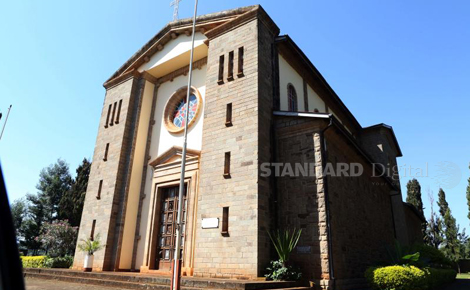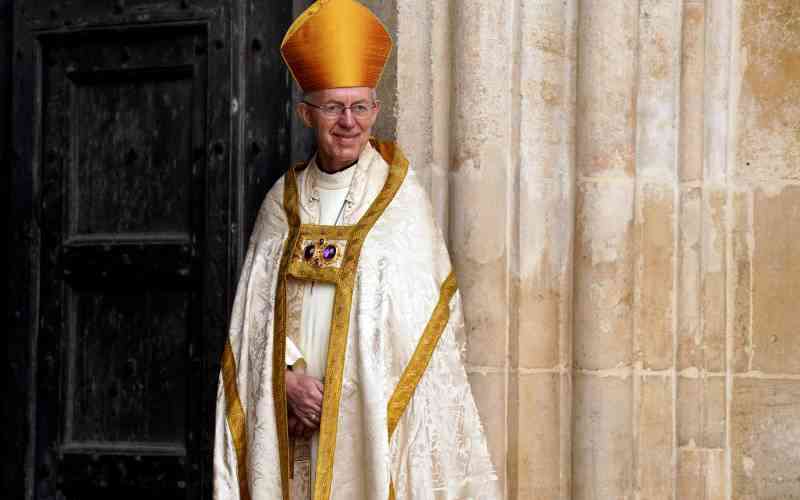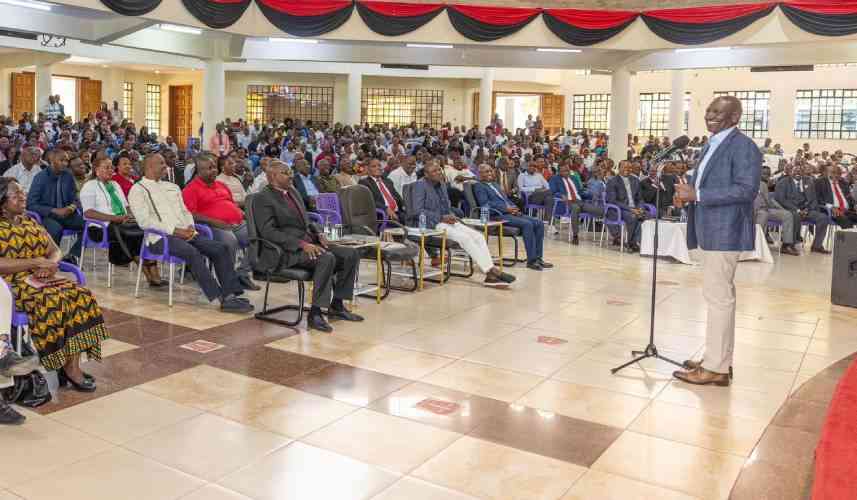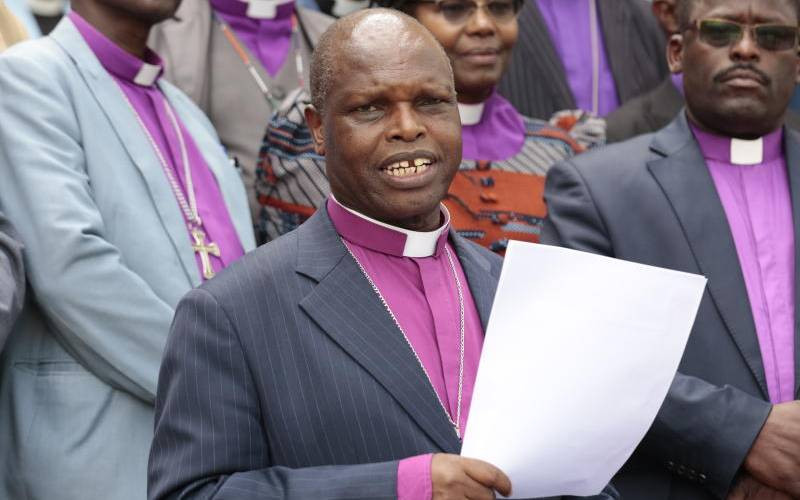 |
|
The magnificent Italian Memorial Church at Mathari in Nyeri County. PHOTO: MOSE SAMMY/STANDARD |
Five kilometres from Nyeri town is the Italian War Memorial Church which houses the remains of Italian soldiers captured by the British Army during World War II.
The sanctuary, which has a hidden history, is the final resting place of 676 Italian soldiers. It has another structure beside it with remains of African soldiers, majority of them being of Somali origin, who could not be buried inside the church because of their faith.
The chapel is not your ordinary Catholic sanctuary. The building, which was constructed in 1952 still, stands decades later.
A visitor will get a chance to see the unique and original items which were left behind by the World War II soldiers.
Locals who spoke to Home & Away said they had no idea about the significance of the church and the history behind it. The church attracts many Italian tourists who pay homage to the fallen Italian prisoners.
Even today, locals in Nyeri have little idea why this church hardly opens for services and why it attracts so many Italian tourists.
The interior of the church has an Italian style. It has appealing copper and bronze inscriptions.
On the walls of the church are small signs indicating the name of each soldier and the battalion they served in, together with the place they died.
The tomb of Amadeo di Savoia Duca di Aosta, who was the senior Italian army officer in East Africa, is positioned near the altar in the church. His statue and military gear lies are fixed atop the grave. Amadeo was the commander of the Italian forces in East Africa when Italy declared war on the United Kingdom and France in 1940. A year later, the Italians went on the defensive in East Africa after a counter-invasion by the British.
Amadeo led 7,000 Italians in Ethiopia and due to the gallant exploits of the Italian battalion, they were allowed to surrender with military honours by the British.
He was later incarcerated in a prisoner-of-war camp in Nairobi where he was a leader among his fellow prisoners but he developed complications in the camp and died before the end of the war.
The Italian Foreign Minister Galeazzo Ciano, under Italian dictator Benito Mussolini, paid tribute to the fallen hero and praised him in his famous diaries as a person who was humane in spirit.
“Simple in his ways, broad in outlook and humane in spirit; so dies the image of a prince and an Italian,” he wrote after getting the news of his death.
Detained
Also detained in Kenya was Felice Benuzzi, an Italian writer who tried to escape in 1943 but later surrendered to the British.
Stay informed. Subscribe to our newsletter
Benuzzi, together with two other prisoners - Giovanni Balletto, a doctor, and Vincenzo Barsotti, a sailor - escaped from their camp and scaled Mt Kenya for 18 days with improvised equipment.
The British camp commandant was astonished at their adventurous escape after they came back to the camp and as a reward for their adventure, they each received 28 days in solitary confinement.
In his book, No Picnic on Mount Kenya (1947), which was first published in 1952 in English but had been published earlier in 1947 in Italian, Benuzzi penned his experience.
The English version of the book was published by William Kimber of London who described it as a story of three prisoners of war (POWs) who escaped.
Majority of the captured Italian prisoners of war interned in British camps where they were deployed to do civil infrastructural projects.
The POWs constructed the Mai-Mahiu road in the Rift Valley escarpment connecting Nairobi to Nakuru. The church, which is not used for regular worship, is a tourist attraction for wartime memorial enthusiasts.
A special mass is celebrated every September 2, the official All Souls Day, according to the Catholic Church, in memory of the fallen soldiers of the war. Italian families, friends and government officials troop to this place on this day to commemorate the soldiers’ dedication to their country.
 The Standard Group Plc is a
multi-media organization with investments in media platforms spanning newspaper
print operations, television, radio broadcasting, digital and online services. The
Standard Group is recognized as a leading multi-media house in Kenya with a key
influence in matters of national and international interest.
The Standard Group Plc is a
multi-media organization with investments in media platforms spanning newspaper
print operations, television, radio broadcasting, digital and online services. The
Standard Group is recognized as a leading multi-media house in Kenya with a key
influence in matters of national and international interest.
 The Standard Group Plc is a
multi-media organization with investments in media platforms spanning newspaper
print operations, television, radio broadcasting, digital and online services. The
Standard Group is recognized as a leading multi-media house in Kenya with a key
influence in matters of national and international interest.
The Standard Group Plc is a
multi-media organization with investments in media platforms spanning newspaper
print operations, television, radio broadcasting, digital and online services. The
Standard Group is recognized as a leading multi-media house in Kenya with a key
influence in matters of national and international interest.






